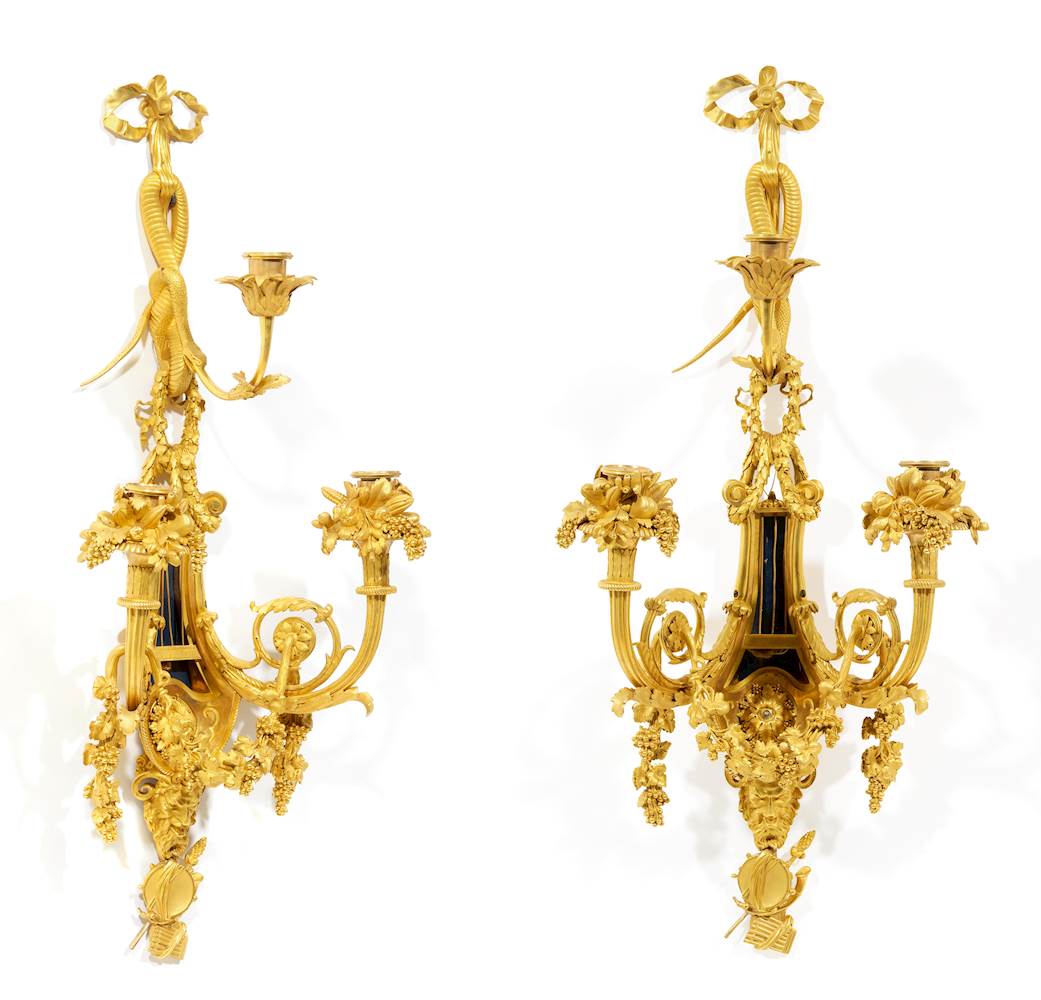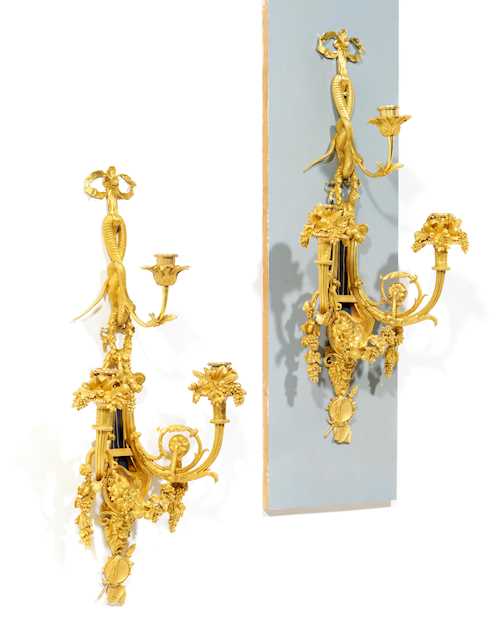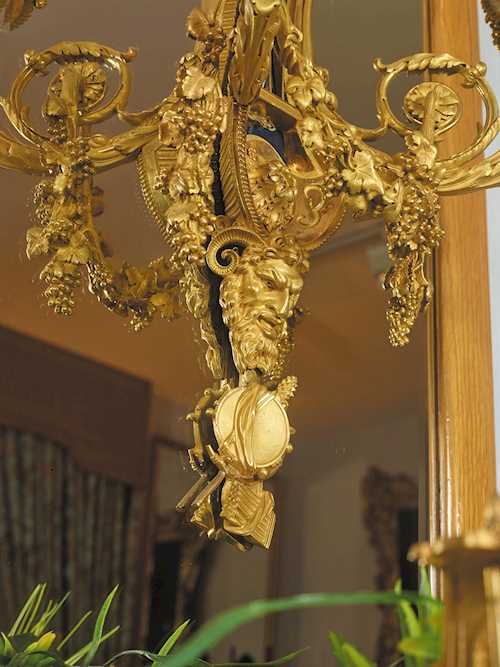
拍品 1020* - A211 Glamour and Sophistication: Luxury in 19th-Century Paris - Donnerstag, 28. November 2024, 10.00 AM
A PAIR OF LYRA SCONCES 'AUX SERPENTS'
Louis XVI style, Paris, late 19th century. Monogrammed on the reverse (BY – Maison Beurdeley, probably Louis-Auguste-Alfred Beurdeley, 1808–1882)
Matte and polished gilt bronze, chased. Lyre-shaped wall plate, with blued metal on the inside. Decorated with snakes, garlands and ribbons, the lower section with lavish decoration in the form of a satyr mask, vine tendrils, a rosette and a musical trophy. Two curved light branches with acanthus leaves, connected by fruit garlands, with drip pans in the form of fruit still lifes and a vase-shaped nozzle, and a central light branch protruding from the snake's mouth.
H 69 cm, L 32.5 cm.
1 sconce is restored. Lyre strings in part bent. The gilding is partly rubbed.
The snake-shaped end of a very similar, two-armed sconce goes back to a Parisian model from 1780, which is now in Aschaffenburg Palace (cf. Ottomeyer/Pröschel: Vergoldete Bronzen. Munich 1986, vol. I, p. 242, fig. 4.5.8). The trophy decoration with satyr mask and grape decoration can be seen on a piece (Paris, around 1780) from the Wrightsman Collection (cf. ibidem fig. 4.5.10.). Another example from around 1780/1790 is known from the Metropolitan Museum (inv. no. 52.206.7.8). The example in the museum also has a snake-shaped end, but only two light branches, and the trophy decoration is also absent. Another example with two light branches and no trophy decoration is known from the Alfred de Rothschild Collection (illustrated in: Seymour de Ricci: Louis XVI Furniture. Stuttgart 1913, p. 270). This extraordinary type of sconce was taken up again in the 19th century. This can be seen from an example of Maison Millet ca. 1890 (see Christie's New York auction, April 9, 2009, lot 106).
The snake-shaped end of a very similar, two-armed sconce goes back to a Parisian model from 1780, which is now in Aschaffenburg Palace (cf. Ottomeyer/Pröschel: Vergoldete Bronzen. Munich 1986, vol. I, p. 242, fig. 4.5.8). The trophy decoration with satyr mask and grape decoration can be seen on a piece (Paris, around 1780) from the Wrightsman Collection (cf. ibidem fig. 4.5.10.). Another example from around 1780/1790 is known from the Metropolitan Museum (inv. no. 52.206.7.8). The example in the museum also has a snake-shaped end, but only two light branches, and the trophy decoration is also absent. Another example with two light branches and no trophy decoration is known from the Alfred de Rothschild Collection (illustrated in: Seymour de Ricci: Louis XVI Furniture. Stuttgart 1913, p. 270). This extraordinary type of sconce was taken up again in the 19th century. This can be seen from an example of Maison Millet ca. 1890 (see Christie's New York auction, April 9, 2009, lot 106).
CHF 8 000 / 12 000 | (€ 8 250 / 12 370)




